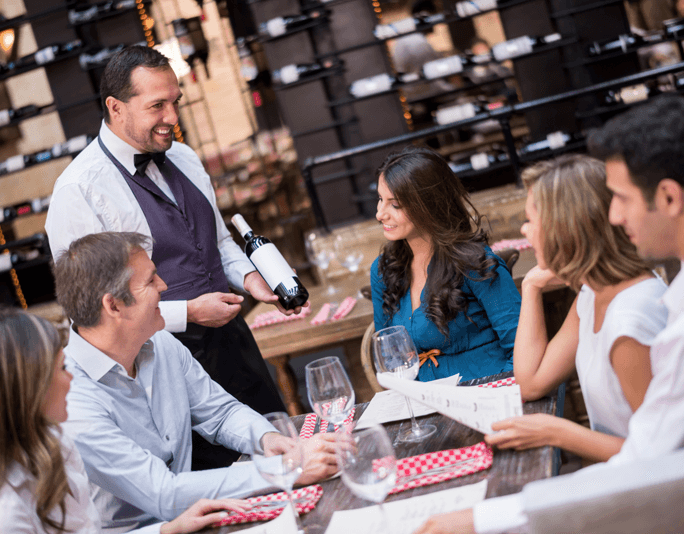Ordering wine can be a simple matter. You simply choose a house white or a house red wine to go with your meal. You base it on what is available and what you can afford. Choosing wine in a restaurant can also be more complicated. It all depends upon whether the dining facility has a selection of wines and a variety of prices. In the latter instance, you will need to read and understand the Wine List.
WINE LIST
Wine lists come in a variety of sizes and types. You may see the choices scribbled on a chalkboard. The wine list may be a small sampling at the back of the regular menu. The wine list may also come on a separate menu – mixed in or integrated with other beverage offerings.
There are good wine lists and bad wine lists. This does not refer only to the quality of wines. A bad list is one that neglects to include certain information. A bad wine list will leave out such things as price, the name of the wine and the vintage. A good wine list will provide you with all sorts of information upon which to base your decision. It will:
- Group the wines by color and place of origin
- It will clearly provide the name of the wine
- It will show where the wine came from or who made it. This will prevent you from selecting a mediocre or bad example of say a Chardonnay
- It will list the vintage – year
- It will also provide you with the price.
- An above average wine list will also give you a bin number. This allows you to give the server or sommelier a specific number. In this way, you can avoid trying to pronounce the name of an unfamiliar wine.
The intent of this information is to help you select the right wine or a favorite wine. It can be educational. A good wine list will introduce you to comparable but different wines. A bad wine list may turn you off some wines all together. Nevertheless, always ask to see the wine list. If nothing else, it will help you become familiar with what is available and increase your comfort level for the next time you order in this or any other restaurant.
ASK FOR OPTIONS
If you are not sure, always ask someone. If there is a sommelier, put your question to him or her. He or she should be glad to answer your questions. A good sommelier will not make you feel stupid or ignorant. He or she will make you feel comfortable. A good sommelier will guide you in selecting the right wine for the meal and serve it at the right time.
If there is no sommelier, ask your server. He or she may be able to provide some guidance. In any case, always ask to look at the wine menu or list. If the server cannot help you, the wine list will at least provide some form of guidance.
PRESENTATION
There are formal and informal ways of serving wine at a restaurant. In some cases, the server will open the bottle and present you with the cork. Smell it and touch it. Check to see if it crumbles. If it does, there may be problems with the wine. More importantly, read it. This will show you if the brand given agrees with that written on the label. In fact, always read the label of the wine you order. There is a rare possibility that the wine you order from the menu is not the wine that arrives.
Once you have “sniffed” the cork, you nod positively to the server. He or she will then pour the wine into a glass. At this point, you will inspect the wine. You will look at its color. Next, you will swirl the wine to release the aroma before you taste it. Unlike during a wine tasting, you will swallow the wine.
Once you have tasted the fullness of the wine discovering all there is to know, including whether the aftertaste is long or short, you thank the sever. If there is a problem, this is the time to inform him or her. You may wish to return the wine if the product is faulty. You can do so if
- The wine is brown in color. This indicates it has been handled or stored improperly.
- The wine has a vinegary or corky smell. This reveals the problem has occurred after the bottling process.
A restaurant has no obligation to replace your wine if you do not like it. If the vintage you have chosen comes from the same grapes but a different producer and you do not like it, you have no right to ask the restaurant to replace it. Consider it as part of the learning curve. If nothing else, it will show you that not all Chardonnays, Rieslings and Champagnes are created equal.

CONCLUSION
Ordering wine in a restaurant can be challenging. You should, however, consider it all part of your education. As in the case of wine tasting and wine shopping, this is all part of learning about wine. You need to do your research and understand the etiquette. You also need to try the various different types of wine lists. It is important to discover and improve your comfort level. In other words, you need to go out and improve your ability to order wine no matter whether the list is good or bad. You must feel comfortable in your ability to go to any restaurant and order wine.







